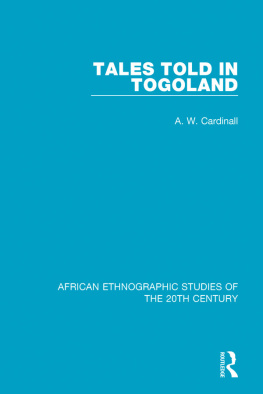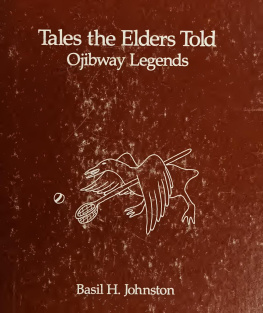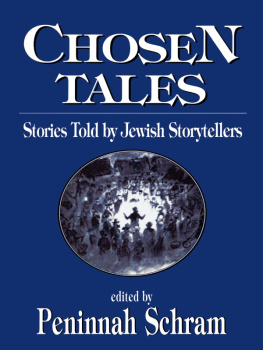AFRICAN ETHNOGRAPHIC STUDIES
OF THE 20TH CENTURY
Volume 14
TALES TOLD IN TOGOLAND
TALES TOLD IN TOGOLAND
A. W. CARDINALL
First published in 1931 by Oxford University Press.
This edition first published in 2018
by Routledge
2 Park Square, Milton Park, Abingdon, Oxon OX14 4RN
and by Routledge
711 Third Avenue, New York, NY 10017
Routledge is an imprint of the Taylor & Francis Group, an informa business
1931 International African Institute
All rights reserved. No part of this book may be reprinted or reproduced or utilised in any form or by any electronic, mechanical, or other means, now known or hereafter invented, including photocopying and recording, or in any information storage or retrieval system, without permission in writing from the publishers.
Trademark notice: Product or corporate names may be trademarks or registered trademarks, and are used only for identification and explanation without intent to infringe.
British Library Cataloguing in Publication Data
A catalogue record for this book is available from the British Library
ISBN: 978-0-8153-8713-8 (Set)
ISBN: 978-0-429-48813-9 (Set) (ebk)
ISBN: 978-1-138-49334-6 (Volume 14) (hbk)
ISBN: 978-1-351-02322-1 (Volume 14) (ebk)
Publishers Note
The publisher has gone to great lengths to ensure the quality of this reprint but points out that some imperfections in the original copies may be apparent.
Disclaimer
The publisher has made every effort to trace copyright holders and would welcome correspondence from those they have been unable to trace.
TALES TOLD IN
TOGOLAND
By
A. W. CARDINALL
F.R.G.S ., F.R.A.I. , & C.
District Commissioner Gold Coast
To which is added the
MYTHICAL & TRADITIONAL
HISTORY OF DAGOMBA
By E. F. TAMAKLOE
Of the Gold Coast Civil Service
OXFORD UNIVERSITY PRESS
LONDON: HUMPHREY MILFORD
1931
CONTENTS
By the same Author
NATIVES OF THE NORTHERN
TERRITORIES OF THE GOLD
COAST
A GOLD COAST LIBRARY
IN ASHANTI AND BEYOND
PRINTED IN GREAT BRITAIN
FOREWORD
I N the following pages I have collected tales told me by peasants and hunters in various parts of Togoland. The final chapter deals with the history of the Dagomba, a history collected by the sole efforts of Mr. E. F. Tamakloe. I have made no attempt at a comparative study of the folk-lore contained in this volume. Such a task is now too great to undertake, except after much study and reading, and in the quietude of some English home. Therefore I have merely recorded the tales and legends and myths as they have been related, contenting myself with the interesting task of their co-ordination.
A. W. C.
SEVENOAKS .
March 1931.
NATURE OF THE COUNTRYDISTRIBUTION OF TRIBESHOW THE ANIMALS OF THE BUSH PROTECT THEMSELVES FROM MANVISITING GODINDIVIDUAL OWNERSHIP OF THE MOONMOONS MARKINGSMARKET OF SALAGATHE DOWNFALL OF SALAGA AND THE GROWTH OF KRACHIRAIN-DRIVING AT ODUMASEA HYENA-WOMAN .
S HORTLY after the war the two Governments of France and Great Britain divided the former German colony of Togoland into two spheres more or less equal in area. To the British Colony of the Gold Coast was allotted the trusteeship of the western sphere which runs contiguous to the formers eastern frontier. It is with the hinterland of that portion of Togoland that these pages deal, but as the tribal boundaries are not the same as the international, reference is frequently made to tribes in the Gold Coast, Ashanti, and Northern Territories.
Nearer to the coastline is a section known as the Southern Section, administered as an integral part of the Gold Coast Colony. It is peopled more or less entirely by tribes of Ewe origin, but there are scattered all over the country remnants of other tribes or relics of an earlier migration by the Ewe. The nature of the country is such that it afforded an asylum almost impregnable for fugitives and refugees from the former bloodthirsty monarchs of Ashanti and Dahomey. Range after range of hills and mountains, thickly wooded and often precipitous, with abundant water and an easily obtained food supply, offered a retreat for many a harassed family or tribe. The people inhabiting this country have been studied and written about several times, notably by the German missionary Spieth, but those who live to the north of this section remain even to this day practically unknown to anthropologists. It is with these that this book is concerned.
Not one volume would suffice for a complete survey of their tribal customs and folk-lore. Scores of volumes would be required. The incompleteness of this present work is fully realized by me, but I venture to think that observations of native life and a record of folk-lore picked up at haphazard from the people themselves must always be of some little worth in these days of rapid development and fast shedding of old-time tradition. Moreover the science of anthropology is daily becoming more and more a collection of highly specialized subjects, and the worker in the field, if untrained, grows discouraged at his own ignorance. It is true that the science of anthropology was founded on the observations of untrained men, but it has almost outgrown those days, and it is only through the fear that the trained worker may not be forthcoming sufficiently soon that this little work has been undertaken.
It has often of late been pointed out how former surveys of native life in West Africa have been compiled by men whose work must have been prejudiced. Missionaries are said to have looked upon native customs as mere workings of a satanic power; others are generally officials whose inquiries have been regarded with suspicion and often accepted as a means of supporting spurious claims or explaining rights which were non-existent but were deemed desirable. That may have been the case; but those compilations have formed the basis of the science of anthropology.
In these pages I have taken especial care to have recorded only the views of the people, the peasantry, hunters, and villagers. Chiefs, and priests possibly, have other views. I know not. But it seems to me that in a survey, say, of England the religion of the peasant is likely to be of more value anthropologically than that of an archbishop; the beliefs of the cottager of more worth than those of the graduate.
The tribes of the Northern Section of the British sphere of Togoland are numerous. In the far north, bordering on the eleventh parallel of latitude, the Bimoba and Mamprussi are to be found. The former are a practically unknown tribe of wild people who still live in the bow-and-arrow stage of vendetta, secret societies, and occasional inter-family war; the latter are a highly-civilized nationthat is to say, for these partsand resemble closely the Dagomba, who are frequently mentioned in the following chapters. Below the Mamprussi are the Chakosi, an interesting tribe of Twi origin, still using that tongue to a very great extent but, unlike their Ashanti relatives, in a state of complete barbarism. South of the Chakosi are the Konkomba, a warlike nation of magnificent savages, who should be studied in detail as they have retained so much of their ancient customs and have remained so unsullied by outside influence. Their neighbours are the Dagomba, a tribe which boasts of a political and religious organization that cannot be characterized as other than civilized.











